What is what
At the very end of the Malay Peninsula lays a small, overturned diamond of an island. Its small size – just over 723 km² – earned it an affectionate title of the Red Dot. Only such a small mark is required to indicate Singapore on the world map. This city-state – one of the four on the globe – lays between Malaysia and Indonesia and is conveniently arranged between the Straits of Johor (from the north) and the Singapore Straits (from the south). Although small in size Singapore is known worldwide as a dominant financial centre and phenomenally prospering port. Given its importance on the world stage much better to Singapore fits its official name, literally translated from the Sanskrit – Lion City (singa – lion, pura – city).
Origins of Singapore
How Island at the End became Singapura
Origins of the place, however, are more than modest. In ancient times, this tiny island was nothing more than covered with mangrove swamp, somewhere at the end of the world. This fact was reflected even in an old name of the place – Pulau Ujong (from the Malay: Island at the End). It was not until the thirteenth century and entirely by accident when the island takes on new importance. It is then when chased by enemies Prince Srivijaya lands on the cape. The exhausted and fatigued prince seeks a refuge in the shade of trees. Suddenly, in front of his eyes appears beautiful and majestic animal. Prince takes the animal to be a lion and considering the encounter as a good omen builds a village on the very spot. To commemorate this happenstance he names the place Singapura. Fortunately for Singapore and its great name, the prince doesn’t know that there are no lions in this part of Asia, and the majestic animal that captivated him so was a tiger.
Until the sixteenth century, Singapura rises to a rank of the major port, well-known even among the Mongolian and Chinese merchants, who call it Temasek (Sea Town). The thriving commercial port becomes the jewel in the crown of the Malay Sultanate of Johor. Portuguese colonisation, however, brings a sad period in the history of the island. It falls into oblivion until 1819, when in Singapore arrives the governor of the British colony of Bencoolen on Sumatra (Indonesia) – Sir Stamford Raffles. Raffles sees it as a strategic point and seeks to establish here the port for the British East India Company on the trade route India – China. To put his plan in place, Raffles turns to an older brother of the current Sultan of Johor and asks his help in depriving of power favourable to the Dutch colonist’s current oligarch. The new sultan agrees to open port in Singapore in exchange for his official title and an annual salary paid by the British. Subsequent years bring further development of Singapore as a strategic trading port, with opium being one of the most lucrative goods. In 1824 Dutch sign a pact with Britain, under which not only the port but also the whole island becomes the property of the British.
From the war rumbles to the financial power-hub
The events of World War II put a stop to the continuous development of Singapore. In 1942 the island fell into hands of Japanese invaders, who entered it from Malaysia, crossing on pontoons the narrow Straits of Johor. The end of the war and the surrender of the Japanese is met with only moderate enthusiasm. Port of Singapore is destroyed, there is a lack of food, drinking water and electricity, and telephone lines are not working. Local people see the defeat as a result of inappropriate defence actions from the British colonisers. Nationalist sentiments are growing. Post-war years bring series of events aimed at the gradual commissioning of power from the hands of the British into the hands of Singapore, as an independent self-governing unit. It finally happened in 1958.
A year later, the People’s Action Party wins the parliamentary election, and its leader Lee Kuan Yew (LKY) becomes the first Prime Minister of Singapore. LKY’s governance, though often criticised for almost dictatorial ways of executing political power (violent repression of opposition parties, limited freedom of speech, etc.) brings Singapore the status of the economic power. The Prime Minister and his entourage put great emphasis on education (especially in English), try to improve living conditions of the population (mass building of public housing – Housing Development Board (HDB) block of flats) and continuously seek to bring into the country, foreign investors. Although Singapore spectacularly grows, LKY aims for it to join Malaya. His aspirations come to fruition in 1963 when Malaya, Singapore, North Borneo and Sarawak form Malaysia. The joy of the success lasts only two years. Significant political, economic and social differences lead to the exclusion of Singapore from the federation. On 09.08.1965 with tears of sorrow in his eyes, Lee Kuan Yew announces Singapore sovereign and independent country of Malaysia.
The following years up to the present are a continuous journey to a phenomenal economic success and social development. Lee Kuan Yew dies on 23.03.2015 leaving behind a legacy of the controversial but brilliant leader and creator of great and magnificent Singapore.
Today, Singapore political scene has lost its brutality. The Economic and social situation of the country is stable enough for the governing power to loosen its grip. However, some aspects will always be strictly controlled and enforced, including religious freedom and respect for the culture of each demographic group that builds the society of Singapore.
Diverse Singapore
Religion
The island is a home to nearly 5.5 million people. About 2 million are permanent or temporary residents. The other 3.5mln are Singaporean citizens, divided into four main ethnic groups: Chinese (74%), Malaysian (13%), Indian (9%) and Eurasian. Each group brings to the society their cultural and religious uniqueness. Their traditions, beliefs and rituals are widely respected and publicly recognised. The testimony of this can be found even in the calendar of Singapore holidays. The most important holiday of a specific religion is marked as a day off. You will find here festivals of Buddhist (33% of followers), Christian (18%followers), Muslim (15%followers) and Hindu (5%). The remaining 17%, which is not defining themselves simply enjoys the days off.
Language
Ethnic diversity has an impact on the language of the country. Officially, Singapore recognises four languages: English, Malay (Bahasa Malaysia), Mandarin (the official Chinese language) and Tamil (a classical Indian language). It is common that all the warning signs, official announcements and information are provided in each of the major languages. In offices or schools, English is in use, but there are also classes dedicated to dialects of each ethnic group. Singlish is an unofficial – as vigorously as ineffectively fought – language form in Singapore. It is a slang derived from a combination of English and other languages elements. In one sentence one can find words from each dialect, what results in a unique Singaporean Esperanto. Very characteristic to Singlish are the following: unique sing-song intonation, suffixes emphasising emotional expression (lah! leh! lei!), and completely ungrammatical syntax (use of wrong times, bypassing key parts of grammar, etc.).
Tastes
Each ethnic group of the country has its traditional dish and distinct cuisine. Singapore is a country where without crossing a border one can try at least four flavours of Asia. The best place for it is a food court, also called a hawker centre. It is a half-opened hall with lots of small stalls offering dishes characteristic to particular countries of Asia. One can find here flavours of Indonesia, Malaysia, Philippines, Thailand, India, and so on. The list also includes new culinary fusions – Italian-Japanese, European-Asian to name a few. In addition, prices in food courts are ridiculously low, and one can get a decent rice dish with broth to wash it down for only 3.50SGD/2.40USD. The best and common tactic to try as many cuisines as possible is to order few dishes – each representing a different country – and share them with co-banqueter. During peak hours – breakfast, lunch and dinner – the common sight are packs of tissues laying on tables. It is a unique way to reserve a seat. Hawker centres are home to kopitiams – stands serving a simple breakfast consisting of Kaya (coconut jam) toasts, soft-boiled eggs and thick coffee with condensed milk. The best part is that these small culinary havens are everywhere – from tiny ones in the local housing estates to large ones in shopping malls or near tourist attractions.
Tropical Singapore
Climate
When deciding on a trip to a food court, one should keep in mind that these semi-open spaces are devoid of air conditioning. A seemingly unusual comment starts to make sense taking into consideration the tropical climate of Singapore. Cooler days (23°C) are quite pleasant, but the problems start when the temperature reaches 35°C, and the humidity exceeds its standard 75 – 80%. Monsoon seasons (June – September, November – March) are somewhat more merciful regarding temperature, but make up for it with many spectacular thunderstorms and heavy rainfalls.
Flora
Such climate is very conducive for vegetation in the country. It is visible at first sight, when you leave Changi Airport. Motorways and highways are split with straps of greenery with wide-leaf palms and tropical trees. Each overpass is adorned with flower beds and pots full of beautiful and colourful plants. Singapore is extensively covered with parks, gardens and well-controlled swathes of a jungle. Home gardens are rich in coconut palms and mango trees with fruits hanging just outside the windows, right at your fingertips. Thanks to the great importance accorded to the maintenance of the green lung of the city-state, Singapore prides itself as the “city in the garden”.
Fauna
Exuberant flora is an ideal shelter and a food provider for various animal species. The common sight is squirrels chasing each other on the tree branches, Asian starlings very loudly announcing their presence, bats fishing for insects and motionlessly stuck to walls, hunting geckos. Hornbills, parrots, macaques, monitor lizards and snakes are typical to the parks but not uncommon in home gardens. More unusual and rare fauna as crocodiles and eagles one may encounter in nature reserves across the country.
Finding your way around Singapore
Transportation know-how
All of Singapore sightseeing locations are easily accessible thanks to a very well organised public transport. One is an MRT – Mass Rapid Transport – the subway system with five lines crossing the whole country. The latest generation of trains is fully automated and controlled remotely, which means there is no driver on board. Their tremendous technical advancement has contributed to the creation of one of the urban legends, according to which there was a ban on chewing gum introduced in Singapore. Apparently, the said gum was stuck by someone in the automatic door frame. Sensors continuously detected the obstacle and did not allow doors to close. The train could not depart what concluded with a huge service delay on the whole subway line. As mentioned, the entire event is officially placed between urban legends and the ban on chewing gum is associated rather with an attempt to maintain the flawless and tidy metro stations as well as the whole country. A similar prohibition applies to bringing in food, drinks and quite smelly durian fruits.
Besides the subway option, there are numerous bus lines and night links available. Unfortunately, the night option is not as popular as in Europe. Single tickets can be purchased from the driver for the exact fare in cash – no change given. MRT, however, has a ticket machine at the each station. The most convenient option is to purchase the multiple journeys EZ-Link card, which can be topped up as required, and which is recognised in both types of transportation. Finally, you can always book a taxi – unfortunately, these are quite expensive in comparison to the public transport. For example – MRT journey from Changi airport to the city centre (Orchard Road) costs approximately 2.80SGD/2.10USD. The same route by taxi will cost up to 40SGD/29USD depending on traffic. Of course, in the price of the taxi, the higher ride comfort is included. With the burgeoning popularity of applications like Uber or GrabTaxi, the current taxi scene is getting more and more competitive. However, Singapore Standard Comfort / Citycab are still quite expensive compared to newer solutions.
Money, money, money
Pre-paid phone card is a must if one wishes to order a taxi or instantly check the current location using a phone GPS. These are available in almost every 7Eleven convenience store. The purchase, however, is possible only upon presentation of the passport. The balance of the phone card can be conveniently topped up as needed.
Currency exchangers are similarly easy to be found as the city centre is full of them. Also, all larger shopping malls have at least one such counter. One should keep in mind, however, that not all currencies are exchangeable in Singapore to Singapore Dollars functioning here. There will be no issue with the exchange of EUR or USD, but the exchange of PLN, for example, is a different story. Another option for getting some cash supplies are ATMs supporting international transactions. The majority of foreign operations, however, are associated with an additional interest rate, depending on the bank, as well as ATM. Although paying with a credit card seems to be the most convenient option, there are places where such payment is not accepted, and only cash transactions are allowed. It also applies to taxis, therefore, before getting into one of them at the airport it is better to make sure that the driver will accept a credit card payment.



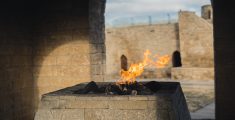

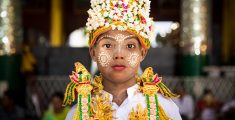
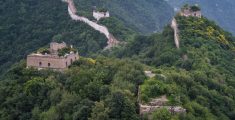


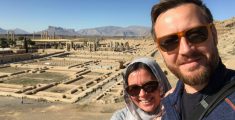


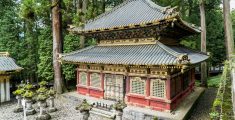

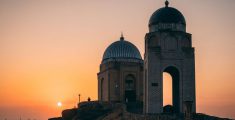
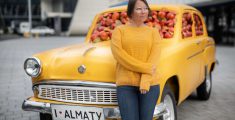


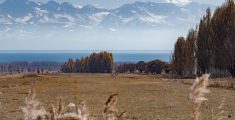
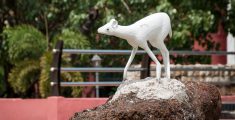
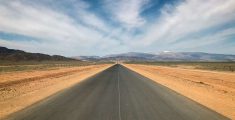


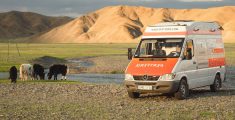

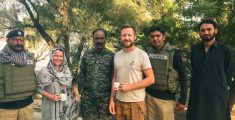

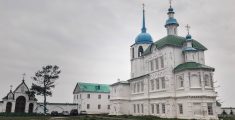


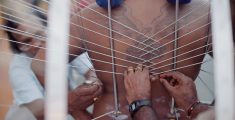


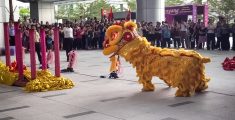
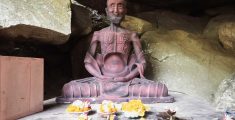
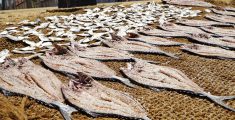
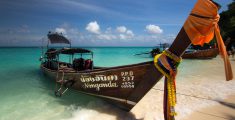
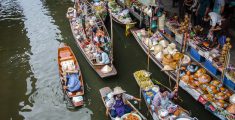
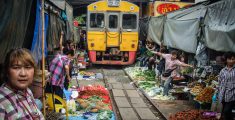
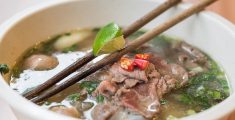
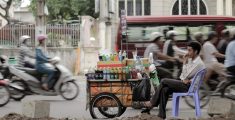
![[English below]
Trzydniowa Japonia w pigułce rozniosła nam głowy. Kilka lat później przeprowadziliśmy się do niej na sześć miesięcy. Kraj przez pół roku konsekwentnie i nieodwracalnie przepalał nam styki. Dlatego nie zdziwiliśmy się wcale, kiedy kilka lat później w Wołgogradzie po meczu Polska-Japonia kibice naszych rywali zabrali się za porządkowanie stadionowych trybun. Co kiedyś mogłoby wywołać uśmiech politowania i wymowny gest posuwisto-zwrotny palcem wskazującym w stronę czoła, dziś było tak oczywiste, że aż trzeba się było dołączyć. Wcale nas nie zdziwiło, że przed stadionem rzesze japońskich fanów gratulowało Polakom tak żarliwie, jakbyśmy wcale nie grali o pietruszkę. Przy tym wszyscy byli tak urzekająco szczęśliwi naszym… hmm… szczęściem, jakby sami właśnie wygrali puchar. Wymianom szalików, koszulek nie było końca. Andrzej wrócił chyba z trzema. W tym jedną vintage z rozgrywek w latach dziewięćdziesiątych ubiegłego wieku. Co prawda juniorska, ale przynajmniej na jedno z nas pasuje.
-----
Three-day Japan, in a nutshell, blew our minds. A few years later, we moved in there for six months. The country has been consistently and irreversibly frying our brains for half a year. That's why we weren't at all surprised when, a few years later, in Volgograd, after the Poland-Japan match, our rivals' fans started cleaning up the stadium stands. What once might have caused a smile of pity and a back-and-forth gesture with the index finger towards the forehead was now so obvious that we had to join in. We were not at all surprised that in front of the stadium, crowds of Japanese fans congratulated the Poles as passionately as if we were not playing for honour at all. And everyone was so charmingly happy with our… hmm… victory as if they had just won the cup themselves. There was no end to the exchange of scarves and T-shirts. Andrzej came back with at least three, including one vintage from the 1990s. It's a junior size, but it fits at least one of us.](https://www.peryferie.com/wp-content/plugins/instagram-feed/img/placeholder.png)